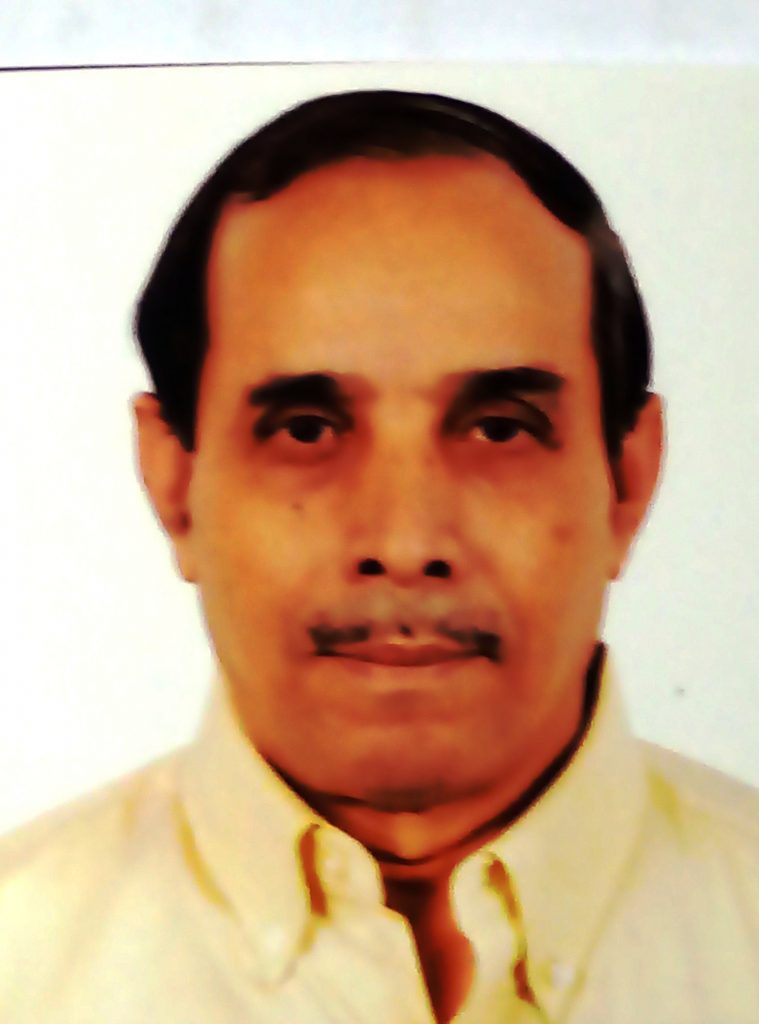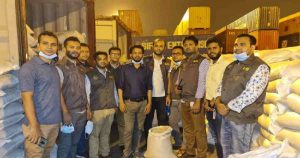Mostafa Kamal Majumder
While improving the content of The New Nation, I simultaneously initiated measures to improve the getup and makeup of the paper. I noticed that the computer section was deciding how the getup should be like on a page to page basis. To accommodate headlines one simple option they had was to increase or deduce font size to fit space. In extreme cases, they used to deshape the type fonts by expanding those vertically or horizontally on a headline to headline basis. So in one single page, a reader used to see multiple types of fonts making the look extremely ugly. Worse even was to increase or decrease the font size of body types disproportionately to make chosen matter fit the space. The introduction of computers made newspaper publication easier than before. I did not imagine that taking advantage of the versatility of computers people would forget the practice of counting letters to choose headlines of accurate length to fit space. In the days of letterpress printing or even offset printing there was no scope to expand or reduce the font size and avoid the practice counting fonts to do good makeup. Because in both types of printing, letters had to be made from liquid lead using automated mono-type or lino-type setters. In the earliest form, letters or types made of lead were available in the market. Those types used to be systematically kept in small wooden boxes from where compositors used to compose matter on wooden trays using bare hands. After composing the matter of a story they used to tie up the same strongly for use in treadle press or rotary press. Through proof-reading composing mistakes were corrected and broken types changed using hands. As the handling of lead types was hazardous to health, hand compositors used to get allowances to drink milk. Under this system of printing editors of pages had to be extremely careful to count type-space or else their matter would either exceed or fall short of the chosen space. Horizontally slim types used to be counted as one en, and normal size types used to count as one em which was equal to two ens. W’s and m’s used to be counted as two ems each. Those who used to know how to counts letter, were accurate in their make-ups creating no burden on the compositors to change types again and again at the final makeup stage.
Lowly paid page editors of NN were not conversant with type counting mentioned above. Because efficient ones got chance in papers which used to pay higher salary and emoluments. So my strategy was first to stop de-shaping of fonts by the computer hands. Fonts should remain unbroken. I then gave the page editors headline schedule. This meant assigning type-sizes for single-column, double-column, triple-column and multiple-column headlines. But the implementation of the headline schedule was easier said than done. The page editors in this case should be able to manipulate words to make headlines fit space. I should thank them that they all cooperated with me. When this decision was implemented the pages of the paper wore a clean look. The page editors used to came to me for help when they did not succeed to choose accurate-size headlines. I gladly helped them. For further improvement of the look of the pages, I changed the body and headline fonts from among those which were available on the Internet free of costs. This made the paper look more attractive. Taking advantage of our innovation another daily newspaper – The Bangladesh Today – simulated the fonts chosen by the NN. The result was the typographical arrangements of the two papers looked similar except their mastheads. Rich newspapers create their own fonts that are attractive and reader-friendly. In the NN I could not afford this luxury.
But the overall look of the paper and the pages were not still as attractive as they should be. As colour was introduced and papers were published on white prints one could make a paper as attractive as one is artistic to give them shapes. I talked to newspaper artist Syed Lutful Huq who made his mark in the now-defunct Dainik Bangla, the Weekly Bichatra, The Independent and some other papers. He gladly agreed to my proposal. This job, however, involved money because I cannot take the services of an artist without paying him honorarium. I thus involved the proprietor who gladly gave the nod of approval. I knew people’s relationships grow or break depending on financial deals. So I brought the artist face to face with the proprietor to make a deal. The artist designed the front, the back and the inside pages of the paper in keeping with preferences given by us and maintaining symmetry. When his designs were implemented the paper got an attractive new look without compromising its original appearance.
I did introduce an improved weather reporting for The Daily Star which I served as one of the founder members for one year in 1991. Before that a stereotyped daily weather bulletins issued by the Bangladesh Meteorological Department for 24 hours used to be printed in all Dhaka Newspapers. I requested Met Office Director Hamiduzzaman Khan Chowdhury to give us weather info of four divisional towns (now increased to 9), rather than Dhaka only, plus of some regional cities. He said those were available in their records and could be provided on demand. Daily Star thus started printing a larger daily weather bulletin than others. This was subsequently simulated by news agency – United News of Bangladesh – with reporter Mosaddeq doing the reporting. For NN 15 years later I planned not only the larger weather bulletin but also a graphical representation in colour. Sajedur Rahman was the director at that time. Under his instruction the Deputy Director, weather forecasting asked his technical people to provide graphic symbols for different types of weather plus the weather map of Bangladesh for use in then NN. The result was NN was publishing weather report with illustration like no other paper. Sometimes the report was published on the back page. This illustration, however, was interpreted as a piece of advertisement to the owners and its printing became irregular. But with financial solvency, improved content input and improved getup NN took off from as a real competitor overcoming its weaknesses as a pariah among the English dailies of Dhaka.




